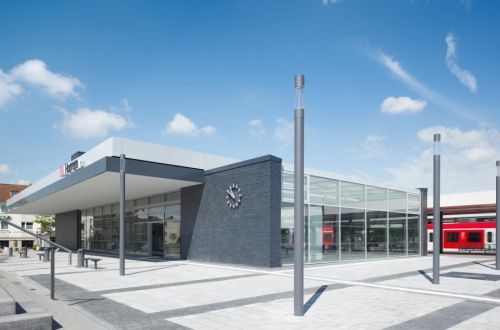The €4.3m station, which is part of DB's green station project, uses a variety of technologies to achieve carbon-free running. These include a photovoltaic system which will produce 31,000kWh of electricity, a geothermal system to generate 29kW of heat output and 37kW of cooling capacity, a solar thermal hot water system, rain water collection to flush toilets, and a lighting concept which combines natural light from the station's large windows and skylights with LED lights.
The station is constructed from wood and steel and has a slate and glass facade. Seats in the station have built-in USB charging ports, and Wi-Fi is available along with a DB Service Store. There is also a bus station and park and ride facilities.
The European Union's Sustainable Stations project contributed €1m to the project, the German government €1m, the state of North Rhine Westphalia €1.3m and the city of Kerpen €300,000.
"Horrem represents a new generation of station buildings which combine modern ecological standards with high customer comfort," says Grube. "This station is proof that sustainable construction methods and modern equipment can go hand in hand. This is a model for the future."
DB plans to build a second CO2-free station in Lutherstadt Wittenberg at a cost of €5m. Construction will start in the second quarter of 2015 and it will open in 2017.

